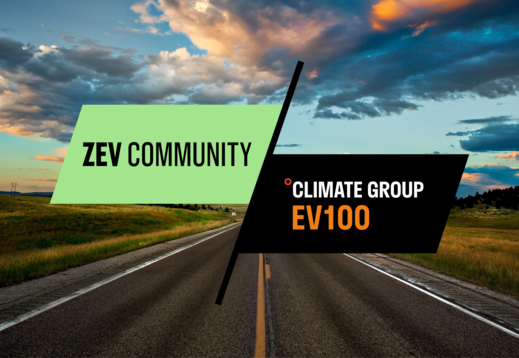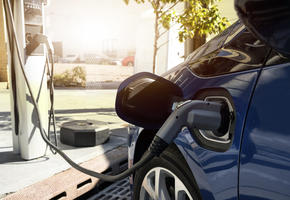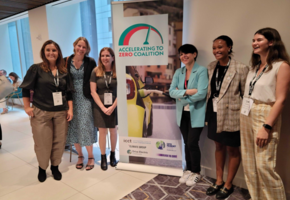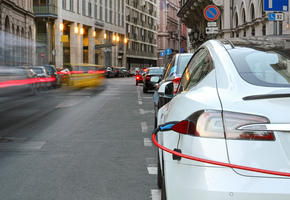We need charging infrastructure to transition to zero emission vehicles. But how do we make this transition as seamless, cost-effective and as fast as possible?
Our EV100 and ZEV Community initiatives have been connecting with governments, businesses and technical experts through a pilot peer forum series. Run across three sessions, the participants shared their insights, experiences and ideas around charging infrastructure.
We looked at three essential topics:
- the business case and cost of charging infrastructure and maintenance
- the accessibility of charging across cities and rural areas
- the challenge of interoperability – how can we make charging as easy as possible?
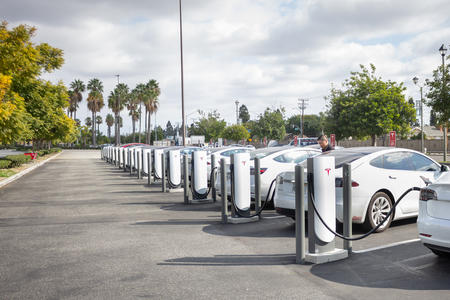
Session 1: business case and costs
A chicken and egg dilemma
Charging infrastructure needs significant upfront investment. In our first session, participants discussed the role of governments in supporting a basic infrastructure network and covering some of the initial upfront costs through incentives (e.g. subsidies) - with the aim of making charging infrastructure more commercially attractive. A key priority for some governments is to find a business model that allows the phase out of public funding.
In rural areas it’s much harder to make the business case for investment – there are fewer EV drivers, higher costs and lower returns. This creates a “chicken and egg” dilemma. Less investment goes into rural areas, meaning less infrastructure is developed, so fewer people use EVs.
In some regions, experts have used charging gap analysis to direct subsidies and public funds towards areas where there is poor market demand, for example in underrepresented communities and rural areas. Could a ‘package of charging benefits’ be the right incentive for rural dwellers? We discussed this new concept, with the idea that people will pay extra for the convenience of having access to charging and maintenance services.
It’s not just a rural problem
There are also challenges in urban settings, particularly multi-family homes or residential units with no parking spaces. Even with the space for parking, renters are reliant on landlords to install charging infrastructure. And there are no incentives for them to do so. Participants advocated for workplace chargers and said that collaboration between businesses and governments will be essential to help companies to install charging infrastructure and deal with the upfront costs.
Business and government collaboration is the bottom line. Together, they can drive demand-led growth through the right balance of incentives and financial support - to rapidly develop charging infrastructure across rural and urban areas.
Session 2: accessibility
Easy and affordable access is a huge challenge
The number one challenge governments face is having easy and affordable access to charging infrastructure. And so, collaboration between governments and the private investors who deploy and maintain these networks, is crucial. Governments and businesses are eager to standardise their collective approach to improve accessibility, particularly in the countryside, along motorways and within lower income communities.
Solving grid capacity issues
We need longer term ambition to solve grid capacity issues. Suppliers are struggling to understand what financial investment is needed, and where this should be delivered.
It’s not a simple solution either. With older buildings, more investment is needed to make them suitable for EV charging installation. In the EU, legislation only requires new or heavily renovated buildings to install charging points – an insufficient incentive.
Communication is key
Communication between governments and electric utility companies must be better to address long wait times for grid upgrades. This is what prevents charging infrastructure being installed quickly. But it’s not just as simple as installing charging points. As they undertake these upgrades, governments also need to communicate and engage with their local communities – particularly those in disadvantaged areas – to explain the benefits of this transition and how it will work.
And cooperation is the bottom line
Overall, the conversation was a positive one, with broad consensus that more cooperation is needed at all levels to deploy and maintain charging networks. Soon, it’s hoped that V2G (vehicle to grid) and battery power back-up technologies will help with managing grid demand in dense areas.
Session 3: interoperability
There are huge opportunities…
The final session covered interoperability or e-roaming. This is the ease in which EV drivers can access any public charge points, regardless of the operator and service provider.
To encourage the uptake of EVs we need an interoperable, transparent and open standard protocols. And there are several reasons for this:
- it improves the overall EV driver experience
- it promotes efficient capital investment
- it enables better EV-grid integration
- it broadly supports the overall adoption of EVs
…but multiple challenges
But achieving this is going to need more research, better communication and strong stakeholder engagement.
Currently there is a lack of integrated communication between charge point operators, who tend to operate their respective networks as ‘islands’, and other networks. This means that how people pay for their service, how much it costs, and its reliability are inconsistent. We need better communication from charging stations to support networks, provide data on usage patterns and inform the roll out of future charging points.
We also need transparent, non-discriminatory and clearly comparable price points. Cost should be solely based on the electricity of the vehicle. A refined payment structure and relationship between different energy providers can make this happen.
But these challenges can be solved, as proven by the case example of MOBI.E – a public company established to support Portugal’s national electromobility strategy. It’s developed a single network subscription and application model to deliver full interoperability across the country for light duty vehicles.
Next steps and future opportunities
At Climate Group, we’re leveraging our networks across the public and private sector to accelerate climate action towards net zero emissions by 2050. This collaborative activity between the ZEV Community and EV100 is the first example of many more opportunities we want to create for engagement and collaboration within our whole Transport System.
We hope to continue these ZEV Community Forums, bring more governments and business to the virtual room, host conversations on the most pressing topics, and maximise our impact to drive the ZEV transition further and faster.
Please get in touch if you’d like to support the ZEV Community work in the future.
